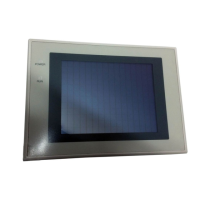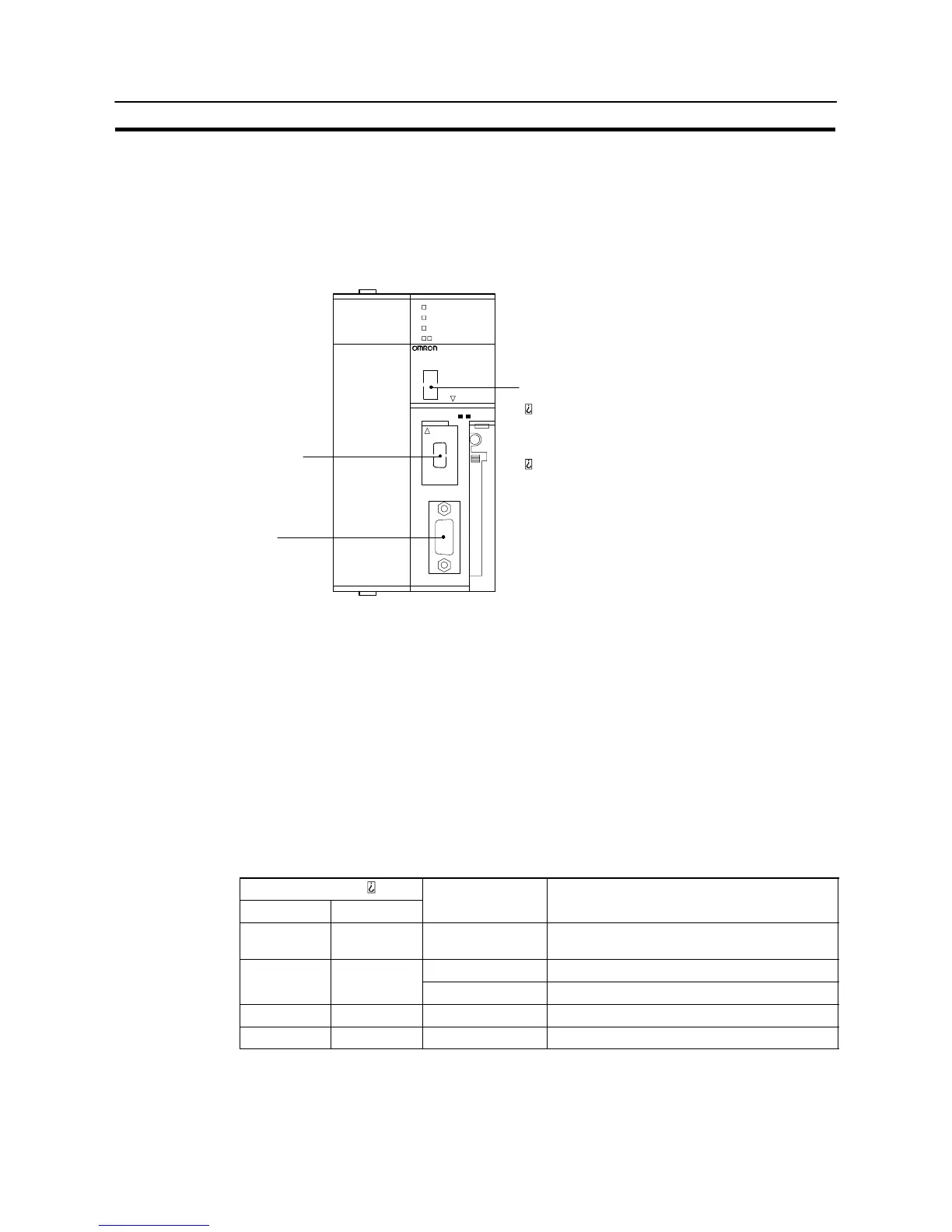80
Connecting to the RS-232C Port at the Host
Section 4-1
[Setting the front switches]
Set the CPU DIP switches to 4 or 5 in accordance with the port NT31/NT31C is
connected to.
Peripheral port
This is used mainly for
connection to the peripheral
tool.
(This also supports the RS–232C
unit connection.)
RS–232 port
This is used mainly for
connection to the RS–232C
unit.
(This also supports the
CX–Programmer.)
DIP switches (inside the battery storage)
Set SW4 to ON (establishing communication in
accordance with PC system settings) when connecting
the NT31/NT31C to a peripheral port.
Set SW5 to OFF (establishing communication in
accordance with PC system settings) when connecting
the NT31/NT31C to a peripheral port.
SYSMAC CS1G
PROGRAMMABLE CONTROLLER
CPU4
2
OPEN
OPEN
PERIPHERAL
PORT
BUSY
RUN
ERR/ALM
INH
PRPHL/COMM
MCPWR
S Connecting to CS1 series serial communication board
INNER board with RS–232C port equipped for CS1 series CPU type :
CS1W-SCB41/21
[Allocation DM area settings for CPU]
Settings are written from the peripheral tool (a programming console or CX-Pro-
grammer) directly into the allocation DM area (system setting area) of the CPU.
After the settings are written, they become effective by turning the power ON, re-
starting the unit, restarting the communication port, or execution of the STUP com-
mand.
In the following, the channel numbers of the allocation DM area and the settings
are shown.
Allocation DM area
Port 1 Port 2
Writing Value Settings
DM32000 DM32010 8000
Host link mode, 2 stop bits, even parity, data
length 7 bits
0000 Communication speed 9600 bps.
DM32001 DM32011
0007 Communication speed 19200 bps.
DM32002 DM32012 0000 Transmit delay time 0 ms.
DM32003 DM32013 0000 No CTS control Unit No.0 for host link

